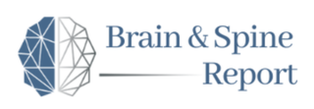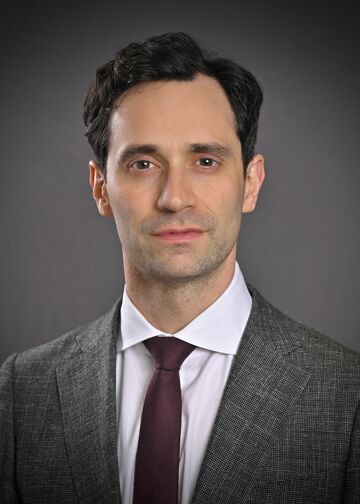|
Neurosurgery Residency application advice from program coordinators/administrators. Summary The application process for neurosurgery residency is vital to understand due to the specialty’s competitive nature. Since 2009, neurosurgery has participated in the National Resident Matching Program (NRMP), which is operationalized through the online Electronic Residency Application Service (ERAS). While there is no specific checklist for what a successful application looks like, the ERAS submission requirements and a general set of guidelines can inform decisions about how to put your best foot forward and increase your chances of matching. This guide from The Association of Residency Administrators in Neurosurgery (ARANS) offers some general advice and some key take-home points to help you jumpstart your residency application journey. Who Are You and What Have You Done With Your Previous Self? Self-reflection is the first step of the very steep and winding staircase towards a career in neurosurgery. Before you can try to convince a residency program to take a chance on you, you must first convince yourself. Are you able to articulate what your motivations for neurosurgery are, what kind of learner you are, and who you want to be? Only you can answer these questions and once you have, the real work begins. Every aspiring neurosurgeon asks the same question; “what do I need to do to match?” The answer is complicated, as there is no magic formula, and there is no checklist of things that will guarantee success. What is important is setting out to do what you love and what you are passionate about. Your application should tell a story, and like any good story, there are two things that matter: What the story is and how you tell it. You’ll have to turn heads with your story’s content and then make them listen by how you deliver it. Your motivations, your letters of recommendations, your research and volunteer experience, your grades and board scores, all of it will help to tell the story. For example, research isn’t dry if you’re passionate about it and get other people passionate about it. Think about the things that interest you, whether it be basic science versus clinical research, spine versus tumor, a community vs academic setting, etc. These are questions you should ask yourself when applying to programs. Once you’ve done that and started answering them, use the resources around you to learn more. Talk to your peers, mentors, and family. Educate yourself about the specialty, the training, the programs, and the application process and get to work. Clear As Mud: The Application Process The application process is often confusing to medical students for all specialties, even though much of it is spelled out and most schools have advising resources to navigate it. In a competitive surgical subspecialty like neurosurgery, most of the confusion likely stems from the daunting ramifications themselves, since this will determine where you will be for at least the next 7 years, and by proxy, the rest of your life. So how do we take this fear and use it? Of utmost importance, application deadlines guide the entire process from submission to match, of which most will be apparent through the Electronic Residency Application Service (ERAS). In your second and third year, it is helpful to have a general idea of when you should first begin taking care of the various aspects of your application. Write down when you should have all your research publications sorted out, when to start asking for letters of recommendation, when to have your personal statement drafted and finished, etc. A general rule of thumb is to start earlier if you can. Make sure that you have your complete application submitted to ERAS on time. There are small windows during which you can submit the application, and you are encouraged to submit it as soon as possible. A complete application means everything that you have control over, so, for example, you do not have to wait for your letters of recommendation to be submitted for your application to be “complete”. Programs understand the behind the scenes logistics of getting feedback from residents and faculty to get letters of recommendation complete, so there is no need to wait. In terms of publication status, please ensure that all the information in this section is as accurate as possible. Be thorough and purposeful while conducting research, as programs not only assess the quantity of papers published but also the quality. A Deeper Look Personal Statement The personal statement serves as one of the most challenging aspects of your ERAS application. Is it often difficult to write about yourself, and even more difficult to do so in a manner that is eloquent and professional, while remaining simple and concise. Although every personal statement will differ in content and style, some things are important to always keep in mind. As mentioned before, keeping it simple goes a long way and thus do not feel the need to use a full page for its own sake. Hundreds of personal statements will be read by the program’s administration, so long, drawn-out essays are likely to have a negative impact. Be sure to start strong to ensure that you capture the reader’s attention and include distinguishing personal experiences or characteristics that may help you stand out. Be sure to keep the length to one page or less. Create a framework for your essay (ex. Why would I make a good neurosurgeon? How can I help enhance this program? What are qualities of a good neurosurgeon?). Write in a way that explains how you demonstrate these characteristics. Lastly, get started with your personal statement process early. You must allow time for brainstorming and planning, creating multiple drafts during the writing process, and time for review by multiple people who are familiar with you on a personal level and familiar with the match process. Interviews It is very much encouraged that you respond to interview invitations as quickly as possible. A common occurrence is having family members monitor phones to make sure that time sensitive invitations aren’t missed. The goal at this point is to find a way to respond diligently. Programs often try to time their invitations so there is no bias between time zones. In addition to responding quickly to accept interviews, if you decide that there's a program that is not in your first tier, that you're not as interested in, please cancel that interview as soon as you can to give other applicants the opportunity to secure that position. It is always important to approach your interviews with honesty and respect while remaining relaxed! Even if you have multiple interviews with repeated questions or formats, treat each interview with the same level of importance and confidence. Letters of Recommendation Letters of recommendation (LOR) are paramount to your success in the match. A successful match will require at least three LORs, but four strong letters is the gold standard. The breakdown of these letters should be: one from the chair of neurosurgery at your home institution, a strong letter from the chair from an away rotation, and two letters from people that know you on a personal level and are willing to endorse you. Although the writer’s academic position plays a role in the significance of the letter, remember that a strong letter from a lower level faculty member is more beneficial than a mediocre letter from a program chair. Be sure to remain respectful of your letter writer’s time by requesting the letter in advance. The best way to request a letter is in person. Some things to avoid when requesting letters: asking in the hallway, leaving a voicemail, sending an email, inquiring during a busy time such as during a hectic clinic day, or bypassing their administrator. Grades and USMLE Scores Given the competitive nature of neurosurgery, academic excellence is essential to matching. Solid pre-clinical grades, and more importantly clinical grades are highly favored when evaluating applicants. Of note, achieving honors in your surgery rotation and in neurosurgical sub-internships and rotations is paramount. The most consistent means of comparing applicants is by board scores, as this is standardized and most objective. Your score on the United States Medical Licensing Examination (USMLE) Step 1 will play a significant role in your chances of being selected for an interview. The mean score for successful applicants is around 240. Applicants each year match with scores lower than 240, but this is most likely counteracted by an otherwise strong application. USMLE Step 2, the second part of the licensure exam process, is also important. An uptrend in scores from Step 1 to Step 2 is favored, and in some instances, may help mitigate a marginal Step 1 score. Many students also are inductees of Alpha Omega Alpha (AOA) or come from schools in the top 40 of NIH funding. Even if you do not possess these two elements, a strong academic and research record paired with great letters of recommendation can set you apart from the rest of the applicant pool. Resources Utilize all of the resources to answer any questions you may have. In addition to faculty and residents at your institution, every program has a program director and administrator. Your institution also has a student affairs department with advisors that can give you more general advising information. Online Resources Neurosurgery Match Society of Neurological Surgeons -Educational Lectures -Essential Neurosurgery for Medical Students Supplement -Policies for Rotations and Interviews -Interview Dates Schedule American Association of Neurological Surgeons Congress of Neurological Surgeons ABNS Training Requirements ACGME Requirements NRMP Charting Outcomes Data AuthorsKathy Guzman Comments are closed.
|
Categories
All
Archives
October 2023
|





9/3/2020